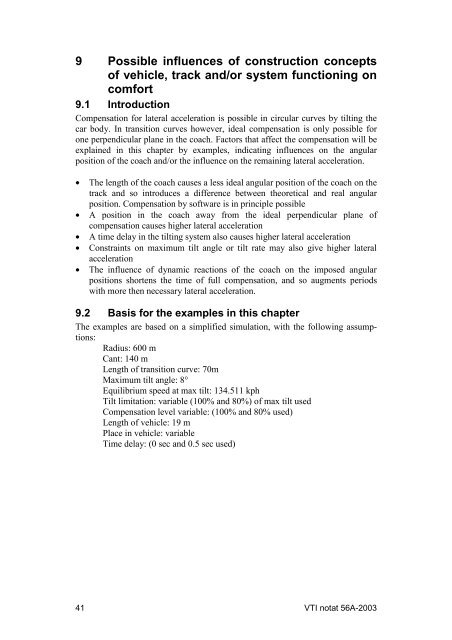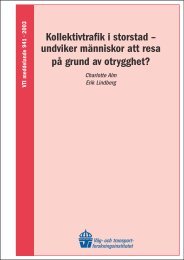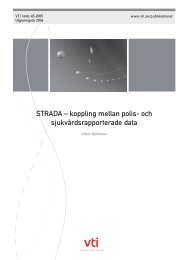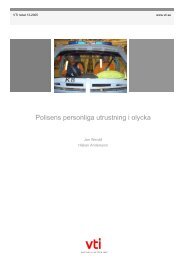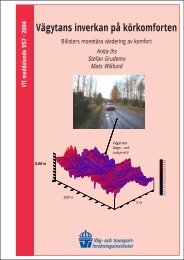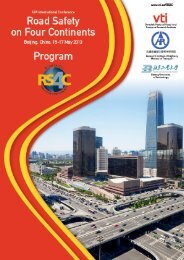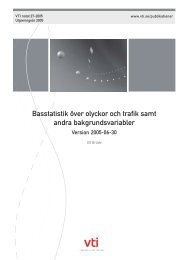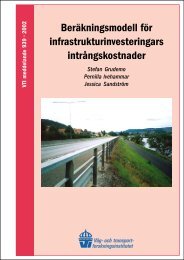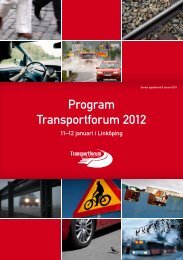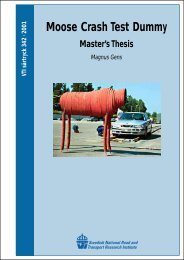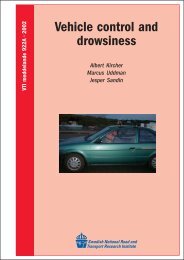UIC comfort tests - VTI
UIC comfort tests - VTI
UIC comfort tests - VTI
Create successful ePaper yourself
Turn your PDF publications into a flip-book with our unique Google optimized e-Paper software.
9 Possible influences of construction conceptsof vehicle, track and/or system functioning on<strong>comfort</strong>9.1 IntroductionCompensation for lateral acceleration is possible in circular curves by tilting thecar body. In transition curves however, ideal compensation is only possible forone perpendicular plane in the coach. Factors that affect the compensation will beexplained in this chapter by examples, indicating influences on the angularposition of the coach and/or the influence on the remaining lateral acceleration.• The length of the coach causes a less ideal angular position of the coach on thetrack and so introduces a difference between theoretical and real angularposition. Compensation by software is in principle possible• A position in the coach away from the ideal perpendicular plane ofcompensation causes higher lateral acceleration• A time delay in the tilting system also causes higher lateral acceleration• Constraints on maximum tilt angle or tilt rate may also give higher lateralacceleration• The influence of dynamic reactions of the coach on the imposed angularpositions shortens the time of full compensation, and so augments periodswith more then necessary lateral acceleration.9.2 Basis for the examples in this chapterThe examples are based on a simplified simulation, with the following assumptions:Radius: 600 mCant: 140 mLength of transition curve: 70mMaximum tilt angle: 8°Equilibrium speed at max tilt: 134.511 kphTilt limitation: variable (100% and 80%) of max tilt usedCompensation level variable: (100% and 80% used)Length of vehicle: 19 mPlace in vehicle: variableTime delay: (0 sec and 0.5 sec used)41 <strong>VTI</strong> notat 56A-2003


